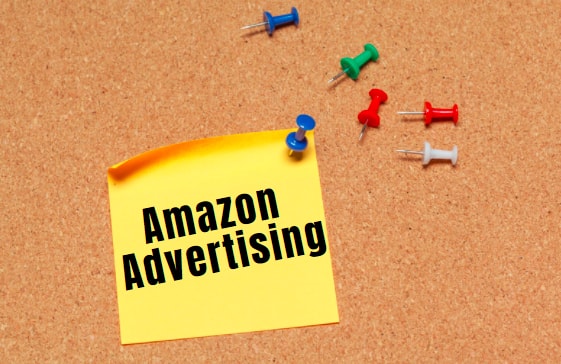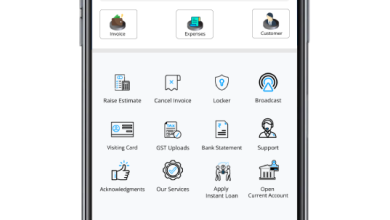
Understanding the user’s intent on Amazon is much easier than Google or Microsoft, People are on Amazon to buy goods.
Customers may directly go to Amazon for questions related to products And you do not want to lose out on these potential conversions.
Although many advertisers are relying heavily on Amazon Advertising, resources to aid in optimization can be difficult to find. Therefore, we’ve put together five strategies that will boost your Amazon ads.
1. Optimize Bids for Placements
Optimizing your placements for optimal results gives you greater control over the places advertisements appear and also the amount you’re willing to pay for these ads.
The kinds of ads for which you can make bids are Top of Search, Rest of Search, and Product Pages.
After you have set your base bid for Amazon Advertising, you can increase the visibility of your product by making bid adjustments for the top of Search and Product Pages.
There isn’t any bid adjustment available for The Rest of the Search, thus this search will work using the bid that you set.
You can look through the reports on the placement of products for each campaign you run on Amazon.
It will show which products were most effective for you Based on this information, determine the proper bid multiplier for your placement between 0-900% to increase the chances of increasing conversions and increasing awareness.
Check out SellerApp’s Amazon PPC strategies guide to know advanced amazon advertising strategies.
2. Increase Budgets for Special Events Using Budget Rules
The new Budget Rules feature allows you to create schedule-based rules. It allows you to increase the daily budget for your campaigns in conjunction with special occasions suggested by Amazon or to set custom timeframes.
For events with a recommendation, Amazon also suggests an appropriate percentage increase to the budget for your campaign each day.
It is also possible to establish rules that are based on performance, for increasing your sponsored Products budget in line with key performance indicators such as CTR, ACoS, and CVR.
This tool can help reduce the manual work involved in adjusting your campaign’s budgets to accommodate certain events or specific periods.
Budget Rules are new and rolling out slowly which means they may not be accessible to advertisers across all markets currently.
3. Use Product Targeting
Product Targeting allows you to refine the location of your ads. It lets you identify products that are similar to yours and then display your sponsored product ads on these ASIN pages as well as within search results by category.
Positive product targeting can increase the visibility of your product on par with similar items on the market.
Targeting your product with negative keywords can be utilized in situations when you don’t want your product to be listed alongside other items, ASIN pages, or results for category searches. It’s similar to including negative keyword phrases in your search campaigns.
To find a fast way to apply this method learn how to do it using Optmyzr further down.
4. Optimizing your ACoS
When it comes to Amazon Advertising is concerned, your advertising cost of Sales (ACoS) is the measure of effectiveness. It’s a measure of the effectiveness of your campaign by the number of sales that are generated and the cost of advertising.
If you’re familiar with Google Ads and the concept of ROAS, ACoS is simple to comprehend as the reverse of ROAS.
ACOS = Total Ad Spend / Total Sales
ACoS will let you know how much you can afford to spend on ads, and also helps you determine your campaign’s budget.
If you’re blessed with a great ACoS it is important not to spend too much and not get the marketing exposure needed to sell the product. Likewise, if your ACoS is not good it could advise you to reduce your bids to ensure that you don’t invest too much, which will reduce the profit margin.
It’s your profits before advertising spends, and thus your break-even ACoS.
The Target ACoS (TACoS) is the portion of ACoS you’d be able to spend on advertising. In the case above the case of a target profit that is 10 or 10% in this scenario, you’ll have $15 (or 15%) to put towards advertisements.
TACoS will tell you what you need to spend on your ads to be profitable. What is considered a great TACoS is based on the goal you have of increasing your profits or visibility.
5. Harvest Keywords
A study from the year 2019 found that nearly 45percent of customers are only browsing only the top two results of results when they are searching for a particular product on Amazon.
Being visible on those first couple of pages requires effective and efficient campaigns that make use of the appropriate keywords.
Google has advanced beyond the use of keywords to focus and subject matter and is much better at identifying keywords that are relevant to searches.
Amazon continues to place importance on keyword phrases. They remain a major element in determining the ranking of a product on the site.
Another reason to spend more time selecting and tracking the keywords you are monitoring on Amazon is the fact that, although Amazon also makes use of close variants to find exact match keywords, However, Google’s linguistic algorithm is more sophisticated.
Google’s precise definition of a similar variant allows the matching of intent with keywords more precise. Therefore, it is important to be more careful when choosing relevant keywords, and also adding negative ones to Amazon.
Keyword Harvesting involves the transfer of keywords, search terms, or ASIN goals from one ad campaign or group to another.
The ultimate objective of capturing keywords is to determine the most profitable search terms and increase your bid on those terms that can enhance your results.
It reveals precisely what people are using to search for your offerings.
The process of identifying profitable keywords can be a challenge and time-consuming. With automated tools to harvest keywords, you will no longer have to search for keywords manually through keywords.
Recommended Guide: How to optimize Amazon product listings.





